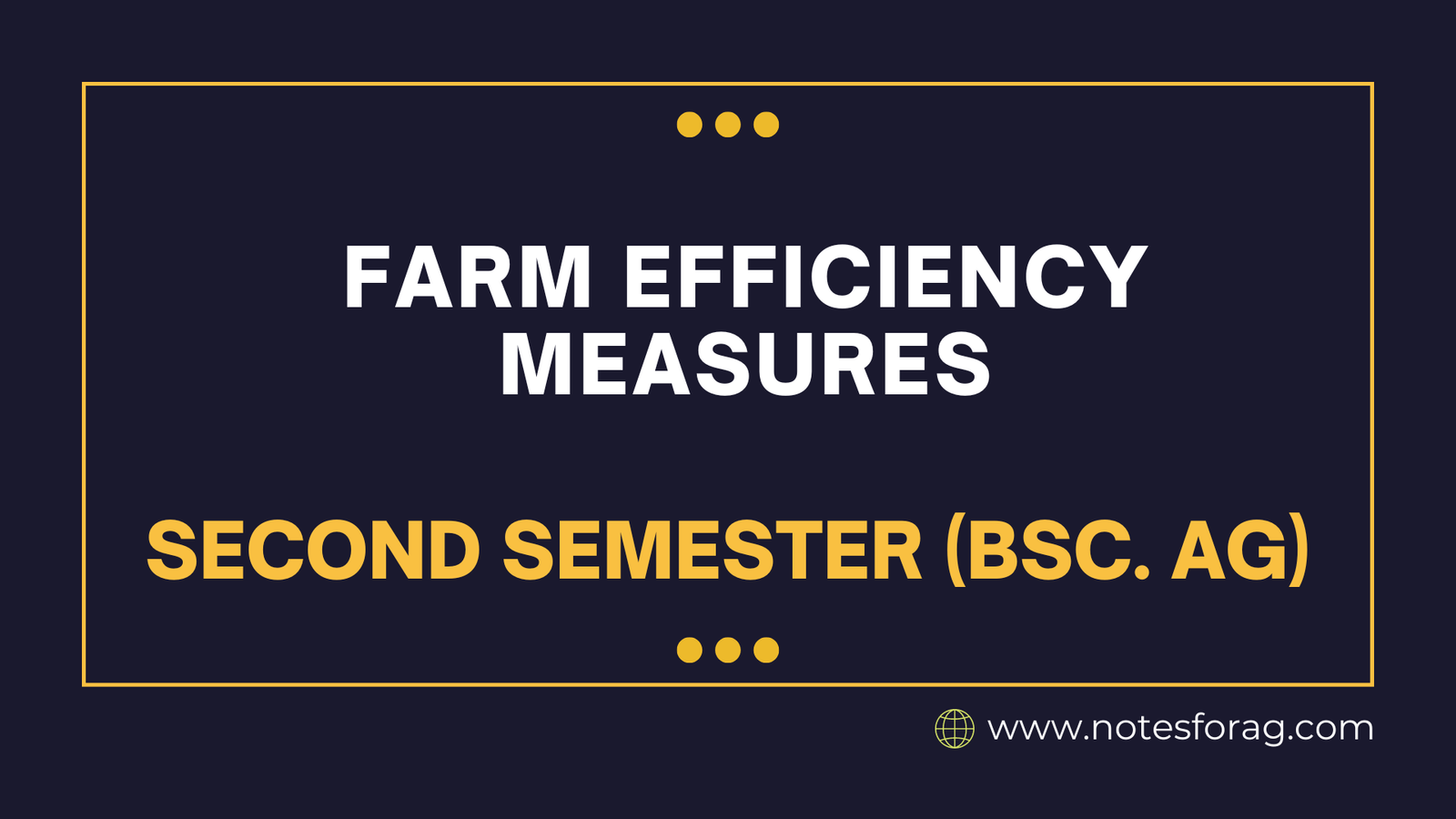Farm efficiency measures are crucial for maximizing the use of resources, raising productivity, and guaranteeing the long-term viability and profitability of farming operations. Important farm efficiency measures include yield per acre and milk production per cow; labor efficiency, such as output per labor hour; and input efficiency, such as water and fertilizer use efficiency. Energy and environmental efficiencies are important, as are financial efficiency measures like operating profit margin and return on investment. In addition, the optimization of overall farm performance depends on the effective use of resources, diversity in production, and technological efficiency.
Table of Contents
Introduction to Farm Efficiency Measures
Farm efficiency refers to the capacity of farming activities to optimize yield while reducing the consumption of resources like labor, energy, and water. It is essential to sustainable agriculture, which aims to supply food and fiber needs without sacrificing the capacity of future generations to meet their own needs. To guarantee long-term agricultural sustainability, farm efficiency measures essentially entails resource optimization, waste reduction, and productivity enhancement.
Farm efficiency measures is fundamentally dependent on resource optimization. This entails conserving water, making sure that energy usage is kept to a minimum, and making the best use of labor. Farmers can increase crop yields and decrease waste by applying water and fertilizers precisely where needed by utilizing technologies like precision farming. In addition to encouraging increased productivity, efficient resource management preserves vital resources for later use.

Increasing farm efficiency measures and productivity has positive social and economic effects. Economically speaking, efficient farms typically generate higher yields at lower costs, making them more profitable. Farmers and their communities may benefit from higher profits as a result of this increased profitability. Socially, effective agriculture can guarantee food security by supplying a consistent flow of food items, which is essential for the health of society. Furthermore, sustainable farming methods protect rural lifestyles and increase community resilience.
Modern Techniques and Technologies
Modern methods and technologies must be adopted in the dynamic field of sustainable agriculture in order to maximize farm productivity. Precision agriculture is one method that makes use of data to maximize crop farming management at the field level. Farmers can monitor field variability and make educated decisions about planting, fertilizing, and harvesting by utilizing GPS technology and a variety of sensors. This focused strategy reduces resource waste while increasing yield, which lowers costs and has positive environmental effects.
The incorporation of Internet of Things-based monitoring systems is a noteworthy development in agriculture. These systems offer real-time information on a number of variables, including temperature, crop health, and soil moisture. Farmers can remotely monitor and manage their fields, guaranteeing ideal conditions for crop growth, by utilizing cloud computing and connected devices. Access to this data via computers or smartphones enables prompt interventions, averting possible problems that might impair productivity.
In the agricultural industry, automated machinery such as planters, harvesters, and tractors is another game-changer. With the help of cutting-edge technologies like GPS and AI, these machines can complete tasks with great precision and little assistance from humans. In addition to increasing productivity, automated equipment lowers labor expenses and lessens the physical strain on farmers. These kinds of innovations are especially helpful in high-demand seasons when labor shortages can pose a serious problem.
Best Practices for Resource Management
Achieving sustainable agriculture and optimizing farm productivity require efficient resource management. Crop rotation, which alternates the kinds of crops grown in particular fields for a predetermined amount of time, is one of the fundamental techniques. By lowering soil erosion, increasing nutrient content, and minimizing pest and disease outbreaks, this technique contributes to the maintenance of healthy soil. To reduce the need for chemical fertilizers, legumes and cereals can be rotated to naturally replenish the nitrogen levels in the soil.
Another essential technique for preserving ecological balance and lowering reliance on artificial inputs is organic farming. Composted organic matter, green manure, and organic pest management techniques increase soil fertility and support biodiversity. Including livestock in farming systems can also help with resource management because they provide natural manure and encourage the use of waste materials in closed loop systems for beneficial reuse.
Given the growing scarcity of this essential resource, water management is essential. Water waste can be greatly decreased by putting in place effective irrigation systems, like sprinkler or drip irrigation. These systems ensure maximum usage and reduce evaporation losses by delivering water straight to the roots of the plants. Rainwater harvesting techniques can also be used to augment water supplies and lessen dependency on outside sources.
Another essential component of sustainable farming is energy efficiency. A farm’s operational costs and carbon footprint can be decreased by switching to renewable energy sources like solar or wind power. In keeping with the larger objectives of environmental preservation and sustainable agriculture, solar-powered irrigation pumps and wind turbines provide dependable and sustainable energy solutions.
In Conclusion, Farm efficiency measures are essential for maximizing the use of resources, increasing productivity, and guaranteeing the long-term viability and profitability of farming activities. These farm efficiency measures include the following: labor efficiency (output per labor hour), crop yield per acre, and milk production per cow. Input efficiency (fertilizer and water use) is also included. Reducing costs and minimizing environmental impact requires the use of energy and environmental efficiencies in conjunction with financial efficiency metrics like operating profit margin and return on investment. The efficient use of resources, variety in output, and adoption of technical innovations all contribute to the overall improvement of farm performance, enabling farmers to make wise decisions and succeed over the long run.
Frequently Asked Question(FAQ)
What are farm efficiency measures?
The productivity, profitability, and efficiency with which resources are used in farming operations are all measured using metrics called farm efficiency measures.
How often should farmers evaluate their efficiency measures?
It is advisable for farmers to conduct periodic assessments of their efficiency metrics, usually twice a year. Monitoring on a regular basis ensures sustainability and continuous optimization by pointing out problem areas and tracking advancement over time.
Related Articles

